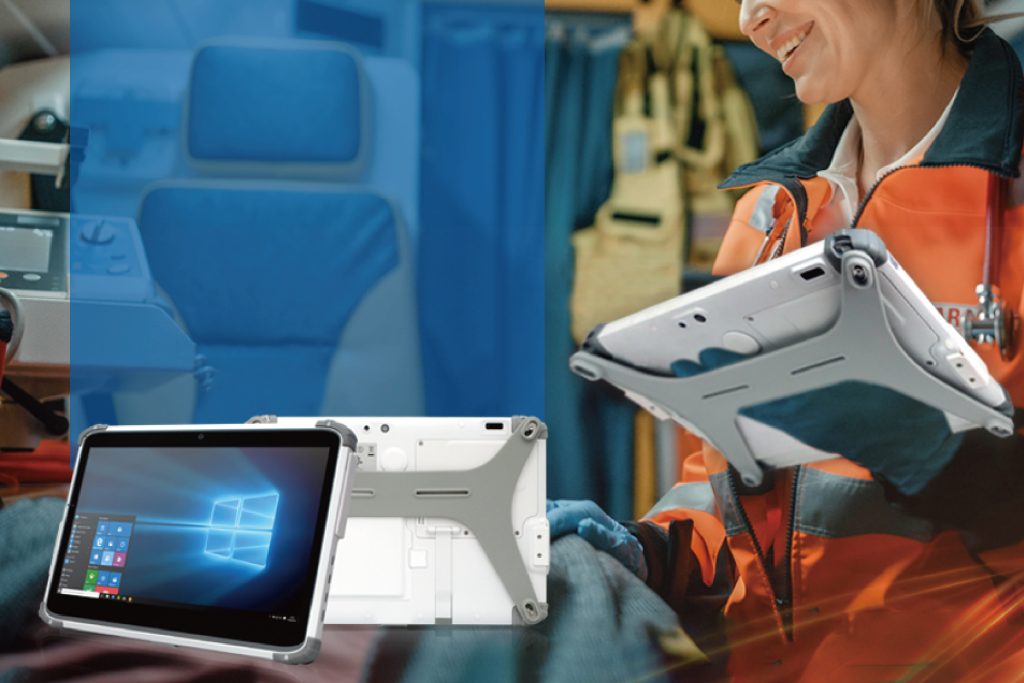
In emergency medicine, time isn’t just money—it’s life—every second counts, especially during patient transport. Every first responder requires precise situational awareness details when responding to a call. That’s where rugged medical tablets with priority access to 5G networks are changing the game for first responders. They bridge the gap between the field and the hospital, enabling real-time diagnostics, consultations, and decision-making during transport.
In this blog post, we’ll explore how 5G public safety technology delivers the reliable, secure, and cost-effective communications solution that emergency response teams need with the use of rugged medical tablets.
What Are Rugged Medical Tablets?
Rugged medical tablets are built for real-world emergencies. Unlike regular tablets, they can handle drops, rough handling, and extreme weather conditions, making them ideal for use in ambulances, helicopters, and field clinics. They come with practical features:
- Antimicrobial casings – rugged medical tablets have built in antimicrobial protection that helps reduce the spread of germs.
- Glove-compatible touchscreens – this feature allows first responders to operate and navigate these rugged mobile computers quickly without removing their gloves.
- High-brightness displays – rugged medical tablets allow for clear visibility in bright sunlight, ensuring critical information is always readable, even in outdoor clinics.
- Long battery life and hot-swappable batteries – first responders get the support they need for extended shifts and non-stop operations without downtime or recharging their device.
- Integrated RFID readers, barcode scanners, and ports for medical devices – this feature allows for instant patient identification, equipment connectivity, and accurate data capture even while enroute to the hospitals.
Rugged medical tablets are not just durable—they’re smart, reliable, and made specifically for the demands of emergency medical care.
Why Enroute Telemedicine Matters
Telemedicine isn’t just for virtual check-ups anymore. For EMS teams, it’s becoming a critical tool during patient transport. Enroute telemedicine allows paramedics to:
- Stream live video and vitals to hospital ER teams
- Access patient medical history securely
- Communicate in real-time with specialists for guidance
- Initiate treatment protocols before arrival
This kind of real-time collaboration shortens time to treatment, reduces errors, and improves patient outcomes, especially for trauma, stroke, and cardiac patients.
But for all of this to work seamlessly, you need one key ingredient: connectivity.
5G: The Backbone of Enroute Telemedicine
First responders often operate in congested network zones—accidents on busy highways, urban disaster sites, or during public events. In these scenarios, regular LTE or shared 5G won’t cut it. Medical data can’t lag. Video can’t buffer. Seconds matter. This is the reason a 5G priority network is important.
Priority 5G gives EMS teams access to:
- Dedicated bandwidth: Ensures uninterrupted connection, even in crowded areas.
- Ultra-low latency: Supports real-time video consultations and data transmission.
- High-speed data transfer: Instantly uploads imaging, lab data, and telemetry to hospital systems.
- Network slicing: Customizes network segments for EMS use, ensuring reliability.
The Road Ahead
The future of enroute care will only get smarter and faster. Rugged medical tablets will soon integrate AI-powered diagnostic tools, predictive analytics, and plug-and-play compatibility with the Internet of Medical Things (IoMT). These developments will further enhance decision-making, automate documentation, and reduce clinician burden.
Combined with 5G, the vision of a fully connected, mobile, and proactive EMS system is within reach.
For first responders, the mission is clear: save lives as fast and safely as possible. Rugged medical tablets powered by prioritized 5G networks are no longer optional—they’re essential. They transform how first responders operate in the field, enable hospitals to prepare before the patient even arrives, and ultimately, raise the standard of emergency care.

